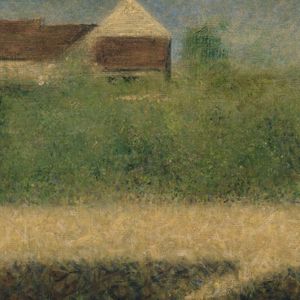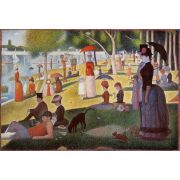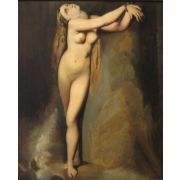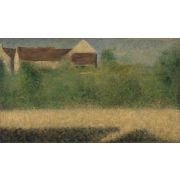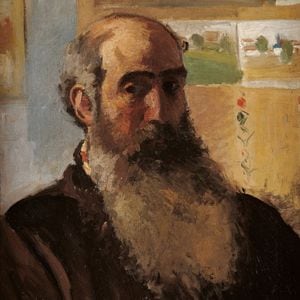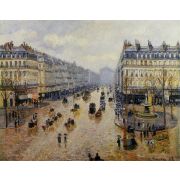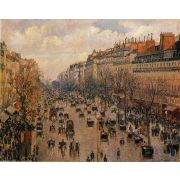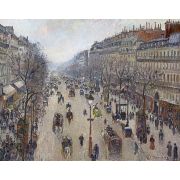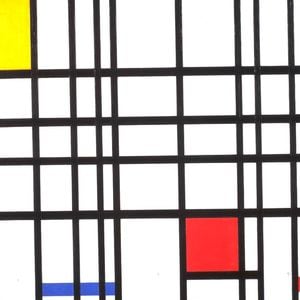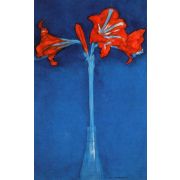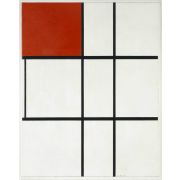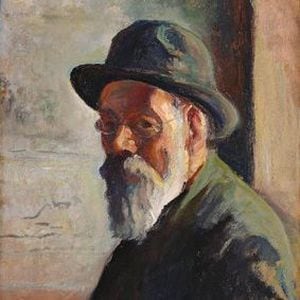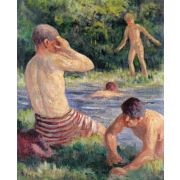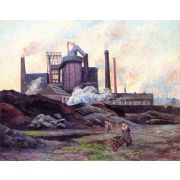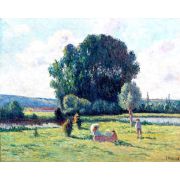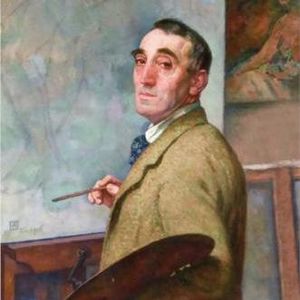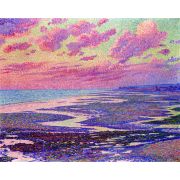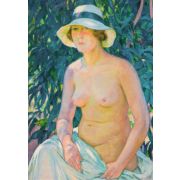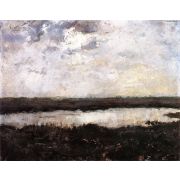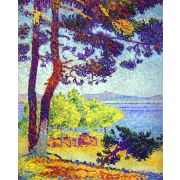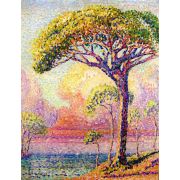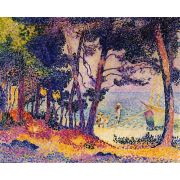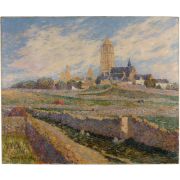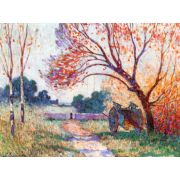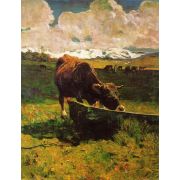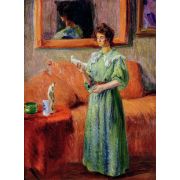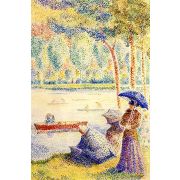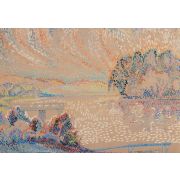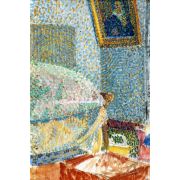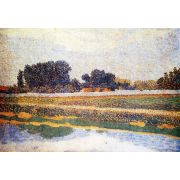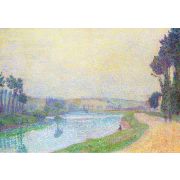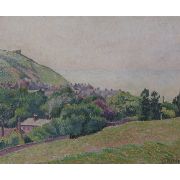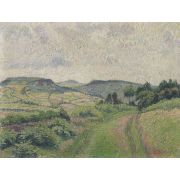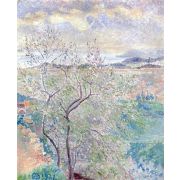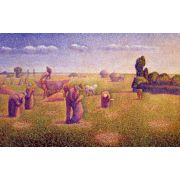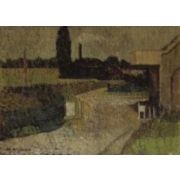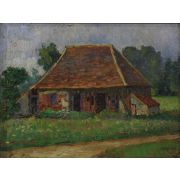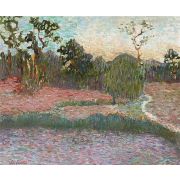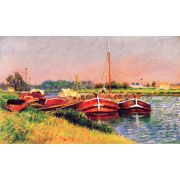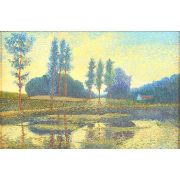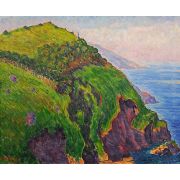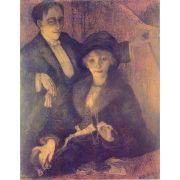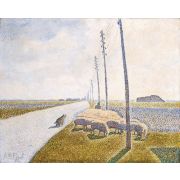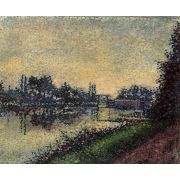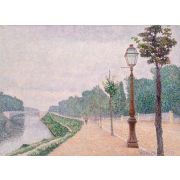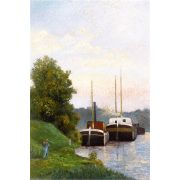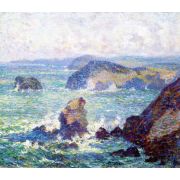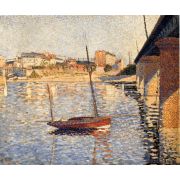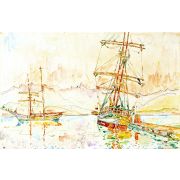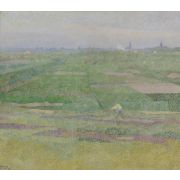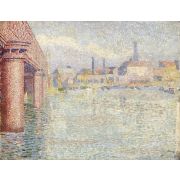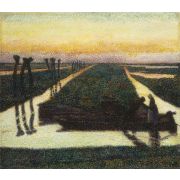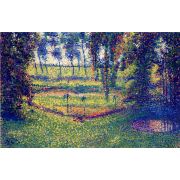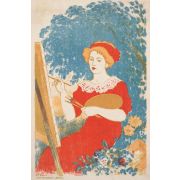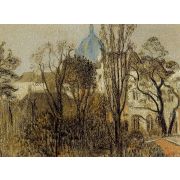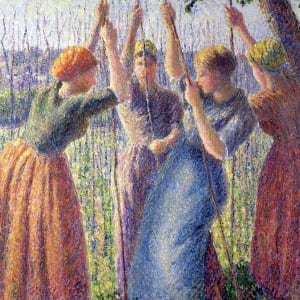
Neo-Impressionism
Neo-Impressionism
1 to 19 out of 19 artists
Georges Seurat
1859 -1891, French / Neo-Impressionism, 159 works
Camille Pissarro
1830 -1903, French / Neo-Impressionism and Impressionism, 1205 works
Piet Mondrian
1872 -1944, Dutch / Abstract Art , De Stijl (Neoplasticism) , Modernism , and Neo-Impressionism, 204 works
Maximilien Luce
1858 -1941, French / Neo-Impressionism, 590 works
Theo van Rysselberghe
1862 -1926, Belgian / Neo-Impressionism, 369 works
Henri-Edmond Cross
1856 -1910, French / Neo-Impressionism, 214 works
Ferdinand du Puigaudeau
1864 -1930, French / Symbolism , Neo-Impressionism , and Impressionism, 143 works
Giovanni Segantini
1858 -1899, Italian / Symbolism and Neo-Impressionism, 109 works
Hippolyte Petitjean
1854 -1929, French / Neo-Impressionism and Post-Impressionism, 54 works
Louis Hayet
1864 -1940, French / Neo-Impressionism and Post-Impressionism, 50 works
Lucien Pissarro
1863 -1944, French / Neo-Impressionism and Impressionism, 39 works
Charles Angrand
1854 -1926, French / Neo-Impressionism, 35 works
Léo Gausson
1860 -1944, French / Neo-Impressionism and Post-Impressionism, 27 works
Alfred William Finch
1854 -1930, Belgian / Modernism and Neo-Impressionism, 18 works
Albert Dubois-Pillet
1846 -1890, French / Neo-Impressionism, 17 works
Willy Schlobach
1864 -1951, Belgian / Neo-Impressionism, 1 work
Paul Signac
1863 -1935, French / Neo-Impressionism, 529 works
Jan Toorop
1858 -1928, Indonesian / Neo-Impressionism , Art Nouveau , and Symbolism, 75 works
Georges Lemmen
1865 -1916, Belgian / Neo-Impressionism and Art Nouveau, 92 works
1 to 19 out of 19 artists
Late 19th-century French Neo-Impressionism extended across Europe. It replied to Impressionism's empirical realism by using science and mathematics to produce preset visual results. Post-Impressionists, notably Georges Seurat, Paul Gauguin, Henri Toulouse-Lautrec, and Vincent van Gogh, started creating new techniques for line, color, and form in the mid-1880s. Seurat left the École des Beaux-Arts in 1879 to pursue his painting style. He admired color intensity and studied Eugène Delacroix's color utilization. He studied color theory and optics and developed Chromoluminarism.
Seurat's readings on "optical mixing" and "simultaneous contrast" were the basis of Chromoluminarism or Neo-Impressionism. Michel-Eugène Chevreul answered consumer concerns concerning yarn color at the Gobelins dye facility in Paris. While trying to solve the issue, he found "simultaneous contrast," or the impact of one yarn's color on another's. Chevreul later authored Color Harmony and Contrast (1839). Later, American physicist Ogden Rood described in Modern Chromatics (1879) how the eye "blends" nearby hues, while Swiss aesthetician David Sutter defined guidelines for the link between art and science in Phenomena of Vision (1880). Neo-Impressionism used complementary shades to produce dazzling colors and a shimmering appearance. Neo-Impressionist artists depended on the viewer's eye to "blend" colors on the canvas.
Some of these hypotheses are now simply quasi-scientific, yet they were groundbreaking. Seurat believed he had found the science of painting, which demanded discipline, precision, and color intensity. His mammoth image, Bathers at Asnières (1884), used his color theory and a new technique called balayé, crisscrossing strokes to apply matte hues. With lengthy drawings, Seurat started A Sunday Afternoon on the Island of La Grande Jatte (1884-1886). Seurat's Pointillist approach uses tiny dots of complimentary colors to depict the bourgeoisie in a riverside park. Seurat released Esthetique, a scientific color theory book, in 1890. Other Neo-Impressionists explored this scientific foundation; for example, Albert Dubois-Pillet developed the notion of passage about 1887.
Paul Signac met Seurat in 1884 and embraced his color philosophy and working approach. Signac was the movement's flamboyant leader and promoter, while Seurat was its restrained theorist. Signac named "Pointillism" during their close collaboration. The Salon committee rejected Bathers at Asnières in 1885. The staid bourgeoisie and academics were baffled by the painting's formal composition, gigantic size, and experimental technique. Seurat, Signac, Albert Dubois-Pillet, and Odilon Redon co-founded the Salon des Indépendants. Camille Pissarro met Seurat and Signac in 1885, and he, his son Lucien, Henri-Edmond Cross, and Charles Angrand formed the first Neo-Impressionist group.
The eighth and last Impressionist display in 1886 heralded the beginning of Neo-Impressionism with the debut of Seurat's A Sunday Afternoon on La Grande Jatte. Pissarro, the only artist to present in all eight Impressionist shows, invited Seurat. A Sunday Afternoon on La Grande Jatte was introduced in the Salon of the Société des Artistes Indépendants, where it garnered even more attention, including that of art critic Félix Fénéon, who created the name "Neo-Impressionism" and became an avid champion for the movement. Maximilien Luce, Leo Gausson, and Louis Hayet also participated.
Seurat's views are unclear, although Neo-Impressionism was firmly linked to the anarchist movement. Félix Fénéon was an anarchist before becoming a La Revue Blanche art critic. All thirty anarchists accused of conspiring to kill French President Sadi Carnot were judged not guilty. As a critic, Fénéon connected Neo-Impressionism with anarchism as a consequence of his trial. In the 1880s, Signac became a passionate anarchist, financially supporting the cause and writing for Les Temps Nouveaux (The New Times.) Élisée Reclus, Peter Kropotkin, and Pierre-Joseph Proudhon advocated a utopian society based on small communities and free association. These anarchists supported Signac's belief that Neo-Impressionist art was tied to a harmony generated from human freedom in a natural context. Scientific investigation complimented the artists' anarchist ideals by liberating them from bourgeois preferences.
Signac became group leader after Seurat's death in 1891. Signac's manifesto, From Eugene Delacroix to Neo-Impressionism, revived the movement in 1898, making it a worldwide movement with anarchist inclinations. The manifesto and paintings like Saint-Tropez, the Storm (1895) influenced Henri Matisse. Signac was president of the Société des Artistes Indépendants from 1908 to 1934, the year he died.
Signac and Cross influenced other painters by changing the Neo-style. Impressionism's Signac started utilizing rich color, as in Capo di Noli (1898), with its pink mountains and little brushstrokes for dynamic flexibility. Cross employed circular brushstrokes of varied sizes to establish perspective in The Golden Isles (1891-1892). The near-abstract piece has Ukiyo-e influences in its lofty horizon. La Plage de Saint-Clair (1896) impressed his contemporaries with its mosaic-like look. Cross utilized quick, sweeping brushstrokes that resembled little blocks and left small parts untreated. Keeping colors apart was emphasized. Cross was "more focused on achieving pure color harmonies than harmonizing landscape or natural scene hues."
In the 1890s, several European painters embraced Neo-Impressionism. The movement used color theory and little dots or brushstrokes consistently. Regional interpretations guide its evolution. In France, several generations of painters were drawn to Neo-Impressionism, each altering it to his interests. Camille Pissarro and Charles Angrand became Impressionists. Pissarro's Pointillist paintings emphasized rural life and peasant labor. England's 1887 Couple on the Street uses a subdued palette to express shadow and tone. Maximilien Luce painted modern sceneries with striking light contrasts. Neo-Impressionism inspired a new generation of painters in the 1890s. Cross' mosaic-like work inspired Signac, Henri Matisse, Henri Manguin, Jean Metzinger, Robert Delaunay, and André Derain. Metzinger and Delaunay used little brushstrokes to imitate color cubes, while Matisse used an ever-intensifying color pallet.
Belgian Impressionist Théo Van Rysselberghe was astonished by Seurat's painting in 1886. He brought the style to the Belgian art scene alongside Georges Lemmen, Xavier Mallery, Willy Schloback, Henry Clemens van de Velde, Alfred William Finch, and Anna Boch. Portrait of Alice Sethe (1888) became his hallmark piece after his trip to Morocco. Due to his influence, Belgian Neo-Impressionism emphasized portraiture. Alfred William Finch, a founder member of Les Vingt, a Brussels group that focused on contemporary French models to liberate Belgian art from patriotic traditions, encountered Seurat and Signac's work at a Les Vingt display in 1886 and became a proponent. Breaking Waves at Heyst (1891) depicts a skyless sea with a decorative accent on pattern and design. Henry Clemens van de Velde's art emphasizes color patterns.
Jan Toorop studied in Brussels from 1882-1890 when he met Seurat and Signac. He blended Divisionism with other creative inspirations and was a pioneer in Holland. Broek in Waterland (1889), a Neo-Impressionist artwork, depicts a couple on a boat along a canal at sunset. He joined the Hague Art Circle and organized an exhibition of Seurat, Signac, Pissarro, Rysselberghe, Van de Velde, and others. Van de Velde toured the show and made meaningful connections with Dutch artists. Johan Joseph Aarts, Petrus Bremmer, and Jan Vijibrief became Neo-Impressionists. Bremmer encouraged a bright, clean palette as a teacher and writer.
Vincent van Gogh and Piet Mondrian were the most inventive Dutch painters to embrace Pointillism and Divisionism. Van Gogh met Signac in Paris in 1887 and absorbed his style. Mondrian adopted the approach in 1909: "I think it's important in our day to employ pure colors in a pointillist or diffuse way. This is emphasized forcefully, yet it's the cornerstone of meaningful form." Both painters went beyond Neo-Impressionism to establish new styles.
Vittore Grubicy de Dragon exposed Italian painters to Neo-Impressionism in the 1880s (they primarily identified as Divisionists). He met and was inspired by Anton Mauve, Vincent van Gogh's cousin-in-law and a movement enthusiast in the Netherlands. Two Divisionist works drew the most excellent attention during the 1891 Milan Triennale. Giovanni Segantini's The Two Mothers (1889) was well-received, whereas Gaetano Previati's Motherhood (1890-1891) was criticized. Previati wrote the only academic book on Divisionism at the time. He significantly understood color perception and believed that employing bright colors to engage the eye would have emotional and spiritual resonance. Motherhood is the inaugural work of Italian Neo-Impressionism and a turning point for Italian contemporary art with its interaction with Symbolism and effect on Italian Art Nouveau and Expressionism.
Divisionism was based in Northern Italy, and although the work generally focused on landscape, it echoed Segantini's remark that art had "nothing to do with replication of the actual" Cesare Viazzi said Giuseppe Pelizza da Volpedo's The Mirror of Life (1895-1898) conveys "the live sensation of complete peace in Nature's soft abandonment" Symbolist or allegorical works typically responded to societal situations. The Fourth Estate was Pelizza's masterpiece (1901). The Path of Workers became a rallying emblem for the Italian socialist movement.
In Germany and Austria in the 1890s, Secessions broke with formal academies' conservatism and championed new art. Munich Secession 1892, Vienna Secession 1897, and Berlin Secession 1898 had no manifesto and included Neo-Impressionism. Curt Hermann combined the style with Plein air Naturalism.
The style most influenced younger painters. Ernst Ludwig Kirchner produced Divisionist paintings like Park Lake in Dresden after the German translation of Signac's From Delacroix to Neo-Impressionism in 1903 and the 1904 Neo-Impressionist display (1906). Other young painters took the approach, as shown in Karl Schmidt-Gartenstrasse Rottluf's early morning (1906) and Erick Heckel's The Elbe at Dresden (1905), and inched it toward Expressionism. Neo-Impressionism was an international style that shattered Impressionist art's supremacy, enabling painters to concentrate on color.
Neo-Impressionism influenced several artists and art groups following Seurat's death in 1891, including Art Nouveau, Fauvism, Cubism, Die Brücke, Orphism, Italian Futurism, and abstraction. Claire Mignon said, "Neo-ability Impressionism's too abstract was part of its modernity. From the universe, it extracted formal features, universal archetypes, color sensations, and lines." Signac, one of the early Neo-Impressionists, painted in the style until 1935.
Contemporary painters still use Neo-Impressionist methods and beliefs. Roy Lichtenstein made Drowning Girl (1963) utilizing stencil dot patterns that remind newspaper and magazine printing and Neo-Impressionist paintings. Chuck Close and John Roy used Pointillism and Photorealism. Close created his art using pixels and cells on a grid. Dutch artist Ger van Elk developed flatscreens, moving pictures based on Seurat, Signac, and Cross's Snow over Seurat and La Grève de Bas-Butin à Honfleur presented in 2004 in Amsterdam.
Seurat's Sunday Afternoon on La Grande Jatte is popular. The artwork inspired Steven Sondheim's 1984 Pulitzer Prize- and Tony-winning musical Sunday Afternoon in the Park with George. Barbarella (1968) and Ferris Bueller's Day Off (1986) include the work (1986). Children's novels and programs like Babar the Elephant and Sesame Street have ridiculed it. The photograph has appeared on many magazine covers.
